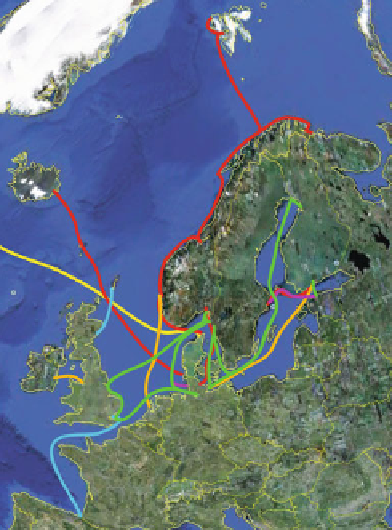Geoscience Reference
In-Depth Information
Fig. 20.8
Map of FerryBox
systems in Europe operated
by NIVA (NO), GKSS
(GER), IMR (NO),
BCCR/UoB (NO), NOCS
(UK), POC (UK),
Marlab/FRS (UK), NIOZ
(NL) SYKE (FIN), SMHI
(SWE), TTU (EST), LOMI
(EST) (map from Durand
northwestern Baltic Sea, on Pålgrunden lighthouse in the lake Vänern, and on the
Helsinki lighthouse in the Gulf of Finland.
20.3 Recent Results and Developments
In the previous sections an overview of the vast variety of remote sensing and
bio-optical techniques was presented, including various online operational and
autonomous systems. In the following section some recent results are shown in order
to illustrate the new knowledge that can be gained from combining remote sensing
with bio-optical techniques.
20.3.1 Assessment of Eutrophication from Space
As mentioned before, Secchi depth is an important parameter that has historically
been used to monitor eutrophication in the Baltic Sea, and it is inversely related
to the diffuse attenuation coefficient,
K
d
. The diffuse attenuation coefficient can be
derived from remote sensing data, and in ocean colour remote sensing it is common
to derive the spectral diffuse attenuation coefficient,
K
d
(490), from the reflectance
One uses the band at 490 nm as it contains information about all optical in-water
constituents, i.e. phytoplankton pigments as well as CDOM and TSM, whereas the

